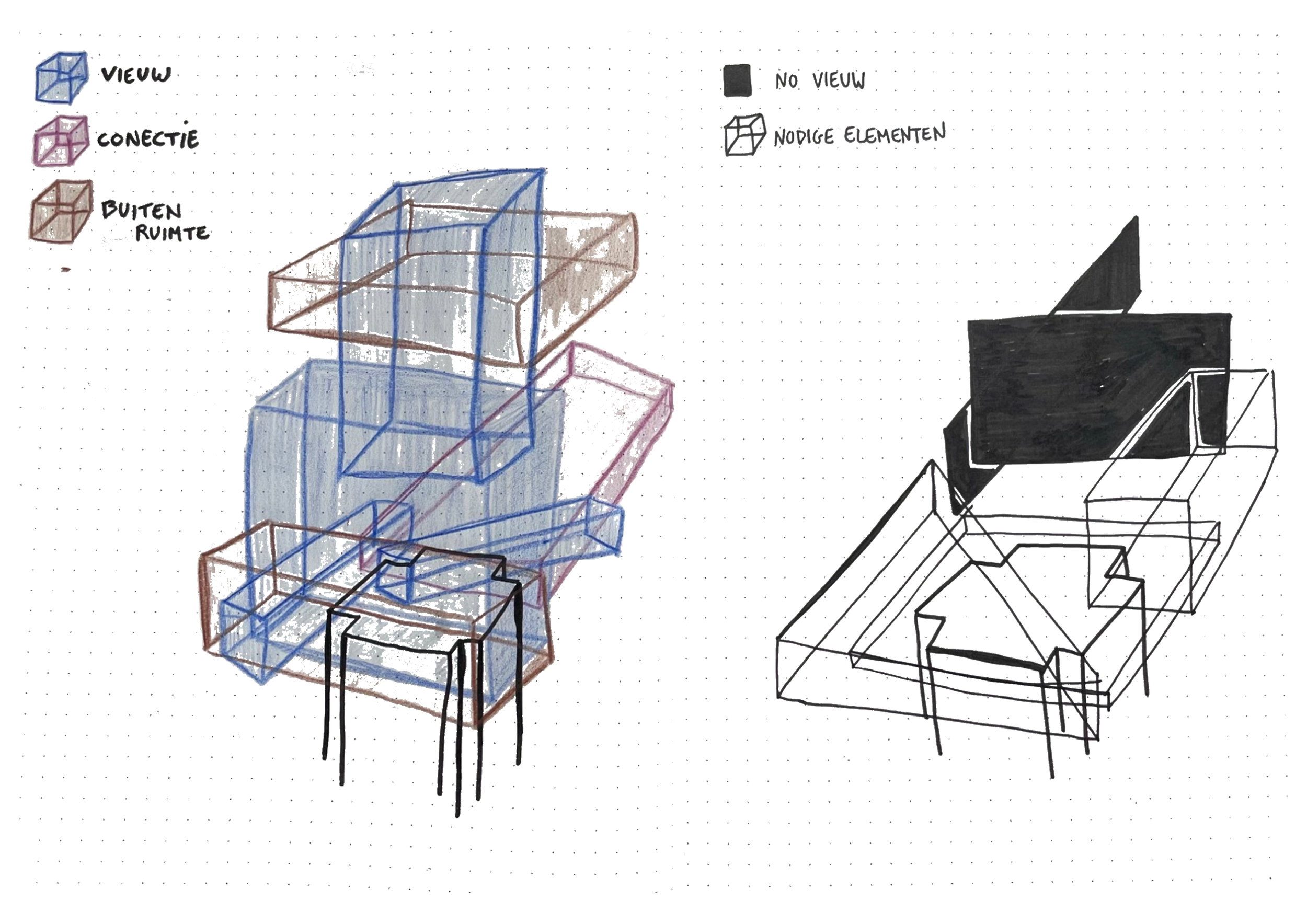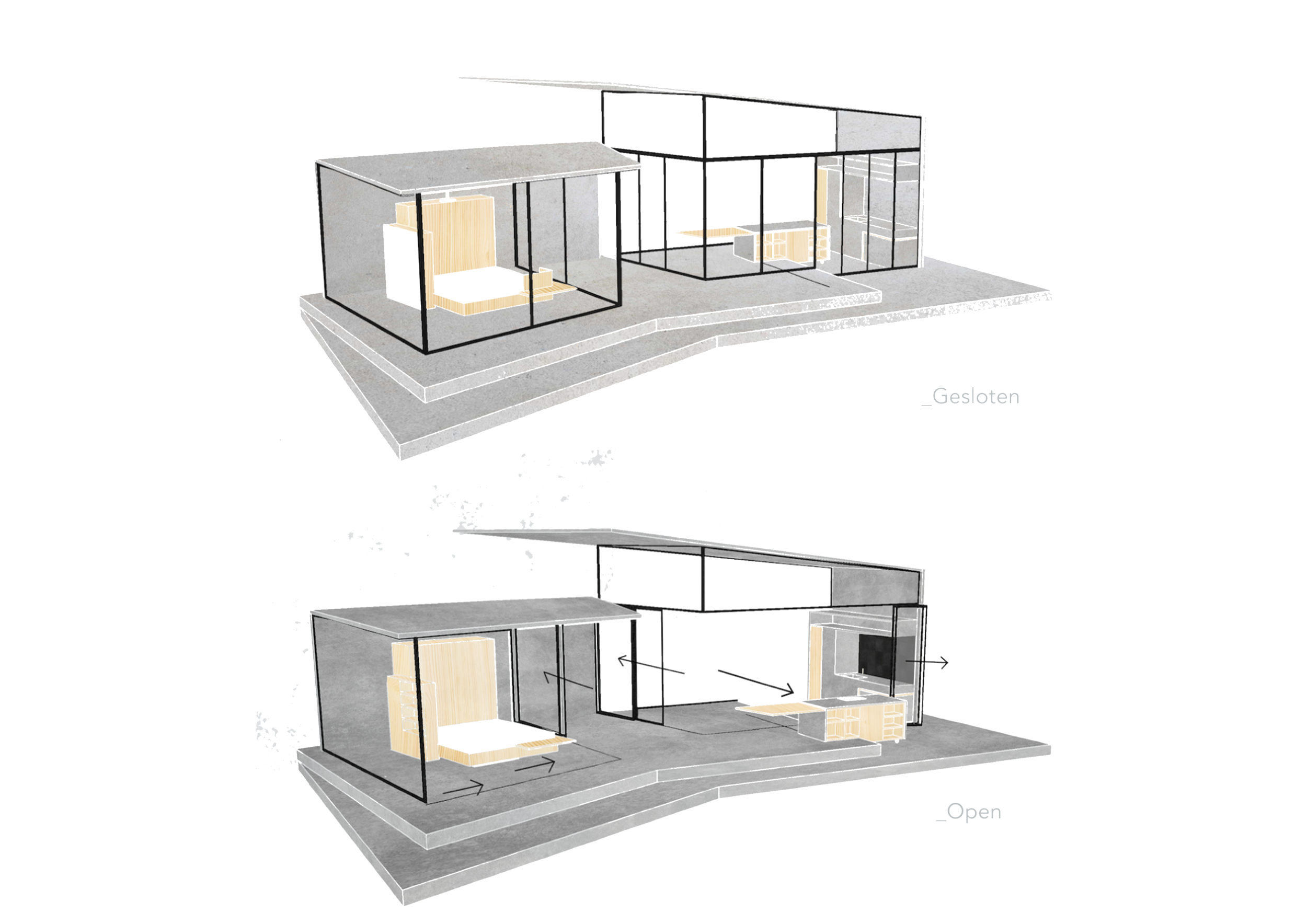_float ‘To exist beside the water without sinking’
A symbol of serenity, of calm surrender. Eyes tracing the glimmering surface, while cyclists drift by along the distant Groendreef.
"Float", where the line between inside and out dissolves.
Every wall, every corner, every subtle curve of Float is designed with the world around it. No line is arbitrary; every angle, every surface is there for a reason. The rising sun spills across a wall at dawn, the setting sun ignites the mirrored surface of the water at dusk—these fleeting moments of beauty shape the very form of this house on the water.
The composition of Float emerges from careful observation. Each space is oriented to capture not only the views but the shifting moods of its surroundings, so that the house breathes with the landscape, responding to it in quiet dialogue.
Most glass walls can open and slide away, dissolving the boundary between interior and exterior. Floors extend seamlessly to the water’s edge, reflections merge with surfaces, and the house seems to float above the landscape itself. Light, water, and air flow uninterrupted through space, erasing the line between inside and out.
In this way, Float is less an object than a living continuum, where architecture and environment meet. Every corner is a pause, every opening a frame, every plane a reflection. The house does not impose itself on the world—it grows from it, suspended in light, water, and air, a meditation on presence, serenity, and the subtle poetry of space.
The plan of Float is equally clear and purposeful. The house unfolds in two areas: a private block for sleeping and bathing, a serene retreat; and a living block, open and fluid, where daily life can spill into the landscape. Even the kitchen participates in this dialogue, sliding along its rail system to merge interior and exterior, inviting cooking, conversation, and light to flow freely between inside and out.
In Float, every material tells its own story, serving a clear purpose. Concrete forms the structure, solid, anchoring the house to its place. Wood shapes the furniture, inviting touch and use. Steel frames define the windows. No other materials were used.
Here, materials and space converge in harmony, forming a house that is simultaneously structured and open, minimal yet alive—where function, form, and environment exist as one.
"Float – a conclusion"
Float is more than a house; it is a meditation on presence, light, and water. Every element, from material to form, has been carefully considered to respond to its surroundings. Concrete, wood, and steel are not just building blocks—they are instruments in a quiet symphony of space.
Inside and outside dissolve into one another. Water, light, and air flow freely through rooms and curtains. Here, the architecture does not dominate; it participates, creating a space where serenity, observation, and daily life coexist.
Float is a place to move through with awareness to experience the subtle poetry of space as it blends with its environment—a home suspended between earth, water, and sky








